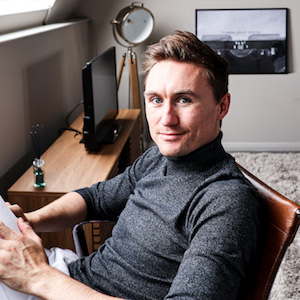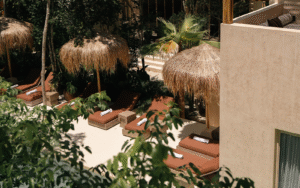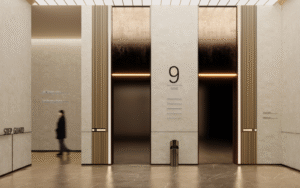Wellness has been high on the design agenda for some time with hotels and the hospitality arena more broadly, having identified it as both a key concern and an important differentiator. Editor Hamish Kilburn sat down with six designers in the Dornbracht Design Studio at C.P. Hart Waterloo to uncover the path wellness is taking moving forward…
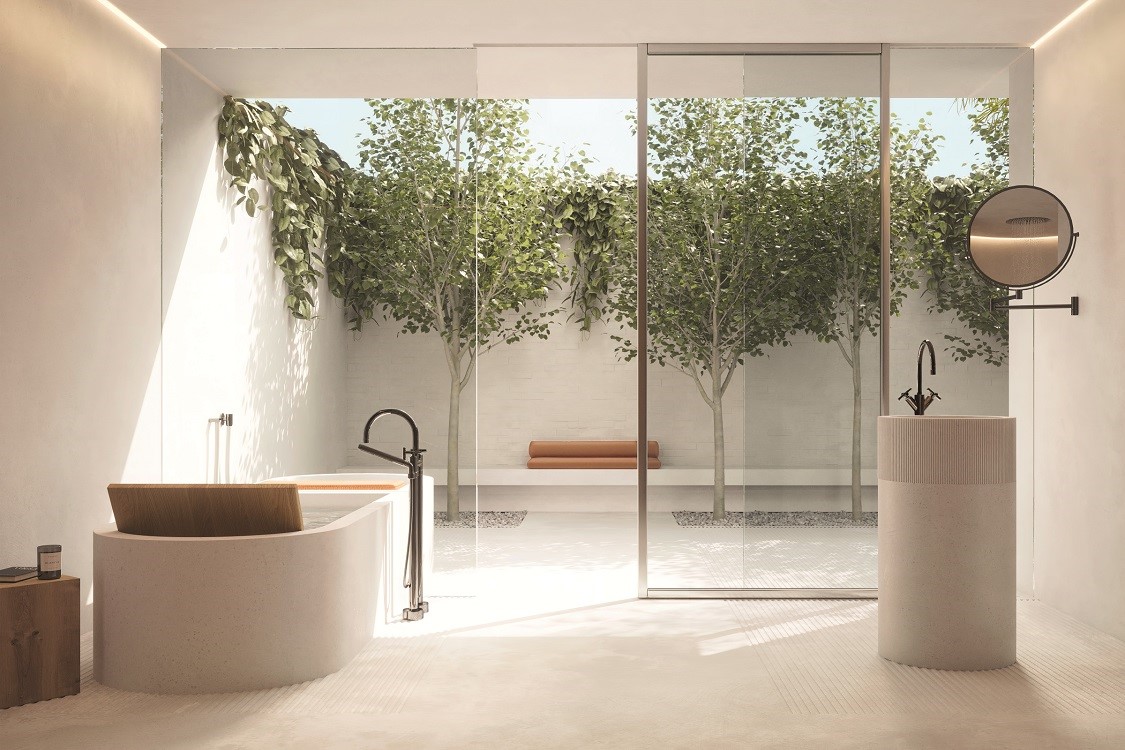
Recent trends show wellness and wellbeing taking on a much broader meaning and there are no signs of this focus narrowing going forward. It has moved boldly beyond the confines of the spa into the very fabric of hotel design, through to the details of the guest experience. Terms like immersive and personalisation have become key and the challenge for designers, when working on projects that will often come into play several years in the future, is to understand the trajectory that the wellness experience is on.
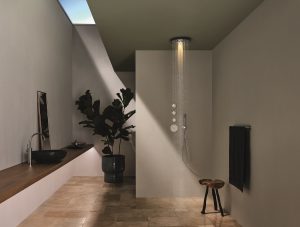
Image credit: Dornbracht
Bathroom brand Dornbracht has spent time studying forms of water presentation and how it influences well-being while developing the technology around the wellness experience. It is fitting that this conversation takes place in the London showroom surrounded by the products that equally respond to and create wellness trends. From innovating a rain sky with natural drops beyond a horizontal shower to creating new experiences and installations, wellness and promoting health has constantly been a focus of Dornbracht designs.
On the panel:
Hamish Kilburn: In terms of wellness trends, what would you say are the most interesting and ground breaking changes we have seen over the last two years in hospitality?
Una Barac: Looking at Siro, a new and very different offering from Kerzner International, it is not about over the top luxury but rather a shift to a more mindful approach, which in this case is all about reflecting the pillars of the brand – strength, inclusion, reflection. There is a clear purpose-driven vision in this offering and this is reflected in the design. Working out is taken seriously and is focussed on the individual, there is no gym, there is no spa, it is about fitness and recovery. The design is ultimately about 10,000 square metres of wellness and within that there is a holistic and a personal approach to wellness.
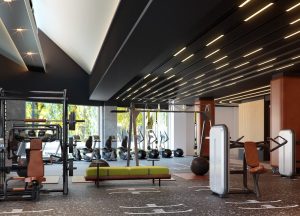
Image caption: SIRO Boka Place, designed by Atellior. | Image credit: SIRO
HK: There is a preconception that wellness trends are expanding primarily in the luxury sector, but as designers how are you seeing wellness being amplified across the lifestyle sector and impacting on wellness concepts more broadly?
Jessica Morrison: I think the definition is expanding all the time – wellness used to be a really niche luxury hotel experience, and now you have brands like 1 Hotels coming into the market being entirely wellness focussed. Lifestyle brands are using site specific elements and location to offer something different, like wild swimming or forest bathing and this opens up the wellness concept to a more experiential element and moving design beyond the confines of the traditional spa.

Image caption: Swissottel Bucharest designed by G A Group | Image credit: G A Group
HK: With lifestyle brands pushing these boundaries, how is the luxury sector responding?
John Paul Pederson: Luxury is becoming more about lifestyle and wellness, less about aesthetics and fittings and fixtures. There is a more holistic approach that is about bringing wellness into the guestroom rather than keeping it within the confines of the spa or gym. Designers need to offer personalised and flexible space as luxury operatives are working harder. We find that clients expect more, are increasingly focussed on personal wellness and expect the hotel to not only meet expectations but increase them.
Wren Loucks: We can also see how the definition of luxury fashion is changing in relation to concerns around a circular economy – this is being mirrored in the realm of luxury hospitality as brands identify that to have a competitive edge, they also need to be sustainable. The definition of wellness is broadening and overlapping with social concerns and is as much about the individual as it is about community.
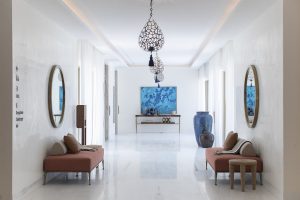
Image caption: Fairmont Taghazout designed by Wimberly Interiors Image credit: Wimberly Interiors
HK: Would you say that sustainability is working in tandem with a more conscious design approach and is this part of the process of expanding the boundaries of wellness offerings in the hotel environment?
UB: There is definitely an awakening to the increased importance of sustainability credentials for hotels and as designers we are now expected to provide the sustainability credentials of materials we are specifying, so that move is clear and there is a serious level of accountability.
HK: Working on a heritage building, which can often be the casein the luxury sector, usually comes with restrictions. Do these restrictions push the design process to be more inventive, particularly in the wellness sector?
Connie Chiu: Bergman Design has been working on a Fairmont project in a listed building. There are definitely restrictions, which are challenging but the site is interesting and allows the design to open up and focus on the surrounding nature. Instead of having the wellness offering in closed chambers we have made sure it relates to the outside space as much as the interior to make it a truly unique experience. Increasingly, wellness is about utilising the entire location rather than pigeonholing it.
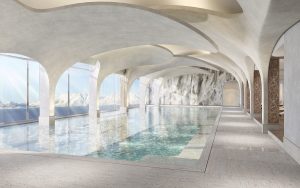
Image caption: Spa Pool design by Bergman Interiors | Image credit: Bergman Interiors
HK: With the demand for increased personalisation in luxury wellness offerings, is there more emphasis on focussed demographics in the design process?
UB: Big brands always understand demographics, but relating back to earlier questions around sustainability, demographics and our understanding of them need to change – millionaires are not grey haired men anymore, they come from a cross-section of ages, interests, genders. As a luxury hotel, if you are targeting this group, you have to understand the people you are targeting, their concerns and the questions they will ask – Gen Z will ask questions about the sustainability credentials of your property.
HK: As designers you develop an understanding of how a space is used, are you then able to challenge a client and push the boundaries in the design process?
JM: As a designer we are always trying to push the client a little bit out of their comfort zone, to see what is unique about the property or offer and develop that into the design. Equally building constraints can push designers out of our comfort zone. Working on the 1 Hotel, where a conscious decision on sustainability grounds was made to refurbish rather than rebuild, the parameters meant we had to work harder to deliver the design vision.
JPP: There is a lot more discussion in the design process on how the guest is going to use a space. As designers we are peeling it back, looking at how guests are going to use the space for mental health, for wellness, as opposed to simply designing because it looks good.

Image caption: Beaverbrook designed by Nicola Harding & Co | Image credit: Nicola Harding & Co
HK: Personalisation appears to be a major trend going forward as hotels and brands look at how to make a space deeply personal to respond to an individual’s needs. Is this counter-intuitive in the hospitality arena where things need to be standardised and does this inevitably lead into the use of technology ?
Lauren Hughes-Glass: We have found clients generally want a simpler and less technical focus in their personal space, although this clearly depends on the type of property. Generally, for our clients, luxury is about simplifying life and stepping away from executive demands. Stripping out anything that requires thought and making design more intuitive is key.
WL: From an inclusive design perspective – things that are intuitive, that can be anticipated – are soothing for people and that definitely relates back to, if not reducing, certainly simplifying technology in our personal space.
JPP: We have done full a circle when it comes to technology – we’ve had the crazy keypads and now we are seeing the simplification.
HK: Connection with nature seems to be one of the key ways in which wellness is being explored outside the bathroom?
JM: Being in nature is apparently the only time that your brain is really stimulated but at the same time calm. Nature provides us with a sense of intellectual stimulation that is inherently different to the visual stimulation we get from a screen for example.
HK: Looking at product development in the wellness arena, how does Dornbracht take all these design demands and package them into products?
Ufuk Pirnal: We are constantly working to understand the needs of clients to inform product development. Spa and spa elements being designed for the bathroom has been key, along with user friendly intuitive solutions as mentioned earlier. As these design demands gain momentum, there is an increase in demand and the products then become more affordable and less bespoke. The last few years, essentially post-Covid, has seen a much greater emphasis on the personal spa and as a result the products have kept up with the demand.
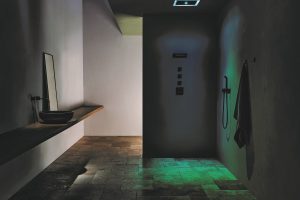
Image caption: Dornbracht Rainshower | Image credit: Dornbracht
HK: Is there more emphasis on the bathroom in particular now in luxury design than there was pre-Covid? Has that been the defining moment, creating a design shift?
JM: The bathroom has always been an important element in a luxury offering, but it is becoming bigger and with an emphasis on products that deliver wellness experiences.
UB: Going back to sustainability, possibly one of the most fundamental changes facing us as designers is the question around sustainability and product sources. Within the next decade I think this will be the biggest shift and in ten years, this will be a very different conversation.
HK: ESG and specifications aside, taking a look at the range of finishes and materials available now, has this impacted on bathroom design?
JM: Three years ago, working on the bathroom design for 1 Hotel, we wanted a dark bronze finish which immediately limited options, three years on and the market is wide open. There is now a huge range of finishes and colours available and definitely the opportunity for designers to be more creative.
JPP: If anything, there are too many choices but what is becoming important now, the differentiators when making product choices, are the credentials and specifications, both on a design and a manufacturing level. The carbon footprint of a product might become the deciding factor when making product choices in such a competitive landscape.
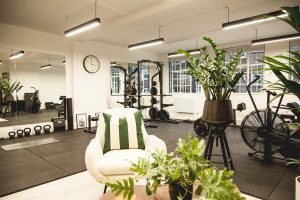
Image caption: Club Q designed by be-kin| Image credit: be-kin
HK: A lot of the conversation has been about nature and injecting nature into a design through wellness – how does this impact on urban wellness and how can you inject nature when its not on your doorstep?
JM: Its about looking at wellness in a different way and understanding that there is more than one way to approach it. Sometimes, particularly in a more urban area, it is less about being zen and more about vibrant and energised. Offering a different way of looking at wellness and both have their place.
WL: Wellness is definitely not just about being zen and sensory seeking behaviour that is energising is also about wellness. There is more than one look to wellness and they all need to be explored and have a place.
CC: Working on wellness design on all levels from superyachts to a hotel bathroom, we always stress that it is not just about the space, its about the state of mind. This can be injected into the design on so many different levels. It is not simply about reflecting the natural world, but developing a design that can help shape a lifestyle.
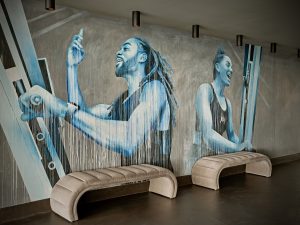
Image caption: SWEAT by BXR designed by Bergman Interiors | Image credit: Bergman Interiors
HK: Finally, it would be useful to end on a note from Dornbracht to get an idea of what to expect in product design moving forward into the year.
UP: In terms of product development Dornbracht will be offering new additions to existing ranges. Some of the classic ranges are now twenty years old with designs that remain relevant and we are adding to these ranges to develop the story further. Importantly there will be new rain showers and new finishes across the ranges.
Producing in-house is another key change which comes back to to the subject of sustainability that has run through todays discussion. As a brand, Dornbracht is aware that sustainability is key in the specification process, so we are putting energy into this and ensuring that the information is both available and accessible.
Dornbracht is one of our Recommended Suppliers and regularly features in our Supplier News section of the website. If you are interested in becoming one of our Recommended Suppliers, please email Katy Phillips.













